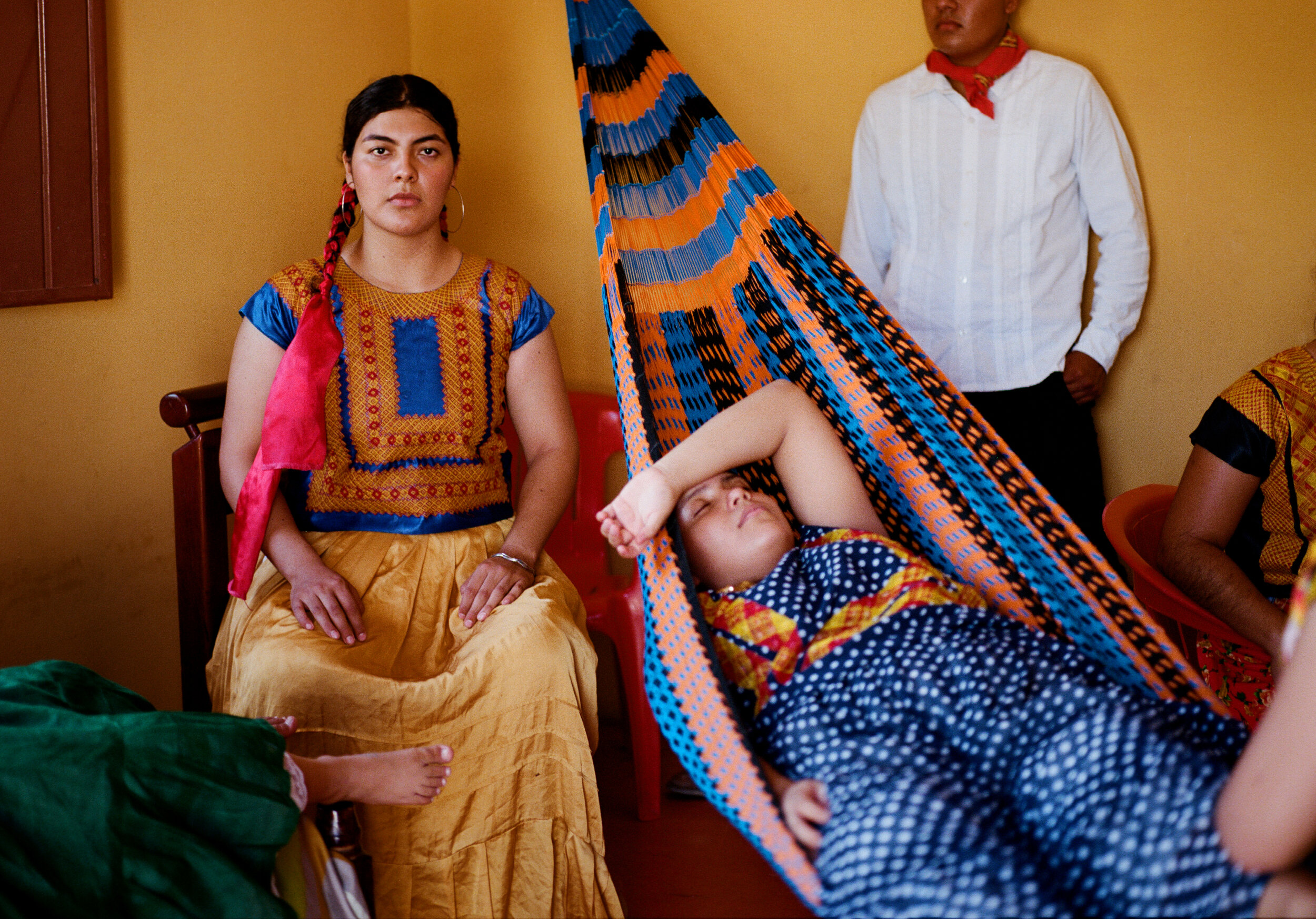Postcards from the Isthmus.
Postcard #2:
The Winter Whispers That Something Here Happened.
By Abril Cabrera @getfreeeeeeeeee
Photography: Alexis Gómez @alexisgomez



El viento murmura que aquí algo pasó
Y lo sigue bordando en sus huipiles.
Cada uno de éstos, representa un instante en la vida de la mujer zapoteca,
Y portarlos me hace ser parte de ello.
Las festividades del pueblo unen a la gente para festejar al Santo Patrón,
Mientras las enaguas y huipiles nos deslumbran con su belleza.
Las mujeres sonrientes moviéndose al ritmo de la música,
Comiendo y disfrutando de la vida.
The winter whispers that something here happened
And it continues to embroider it on its huipiles¹.
Each one of these, represents an instant in the life of the Zapotec² woman,
And wearing them makes me a part of it.
The town festivities join people to celebrate the Santo Patrón,
While the enaguas³ and huipiles delight us with their beauty.
The smiling women moving to the music’s rhythm,
Eating and enjoying life.
Abril Cabrera
¹ Huipil: [ˈwipil]: traditional dress/tunic initially worn by indigenous women from the Mesoamerican region (central Mexico to Central America) since before the Conquest of Mexico by the Spanish and it’s still the most common indigenous garment worn by women till the date.
² Zapotec: Be'ena'a which means "The Cloud People" is an indigenous pre-Columbian civilization originated in the Valley of Oaxaca, Mexico in the late 6th century BC and, till the date, it is considered one of the most highly developed cultures of Mesoamerica. Nowadays, the population is estimated at approximately 800,000 to 1,000,000 persons, many of whom are monolingual in one of the native Zapotec languages and dialects.
³ Enagua: [eh-nah-gwah] As it is mostly identified as a piece of clothing worn as an undergarment, in some Mexican communities it is known as an outer garment, a skirt.
